TREML1
-
Official Full Name
triggering receptor expressed on myeloid cells-like 1 -
Overview
TREML1 is located in a gene cluster on chromosome 6 with the single Ig variable (IgV) domain activating receptors TREM1;(MIM 605085) and TREM2 (MIM 605086), but it has distinct structural and functional properties. TREML1 enhances calcium;signaling in an SHP2 (PTPN11; MIM 176876)-dependent manner (Allcock et al., 2003 (PubMed 12645956); Barrow et al.,;2004 (PubMed 15128762)). -
Synonyms
TREML1;triggering receptor expressed on myeloid cells-like 1;trem-like transcript 1 protein;dJ238O23.3;TLT1;TREM like transcript 1;triggering receptor expressed on myeloid cells-like protein 1;TLT-1;PRO3438;GLTL1825;MGC119173
Recombinant Proteins
- Human
- Mouse
- Rhesus macaque
- E.coli
- HEK293
- Mammalian Cells
- C-hFc
- Human Cells
- GST
- His
- Fc
- Non
- DDK
- Myc
- Avi
Background
What is TREML1 Protein?
Treml1 is part of the TREM protein family, specifically the immunoglobulin superfamily, acting as a single Ig domain orphan receptor located on the alpha granule membranes of platelets. It’s found in myeloid cells, including monocytes, macrophages, neutrophils, and dendritic cells, playing roles in platelet aggregation, inflammatory responses, and cell activation. Linked to Gray platelet syndrome, a rare platelet disorder, Treml1 might also influence innate and adaptive immunity, although its ligands and complete functions are still being explored. Alternative splicing results in multiple Treml1 transcript variants. Overall, Treml1 is key in immune response and hematology.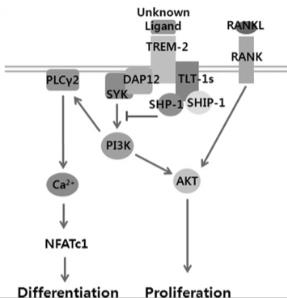
Fig1. TLT-1s recruits SHP-1 and SHIP-1 phosphatases to TREM-2, thus negatively regulating osteoclast differentiation and proliferation. (Soo-Hyun Yoon, 2012)
What is the Function of TREML1 Protein?
TREML1 is a type I single Ig domain orphan receptor mainly found on the membranes of platelet α-granules. It plays a key role in platelet aggregation, inflammatory responses, and cell activation and is linked to Gray Platelet Syndrome, a rare platelet dysfunction disease. When activated, TREML1 moves to the platelet surface, binds fibrinogen, and enhances platelet aggregation to prevent bleeding. It also encourages interactions between platelets and neutrophils, impacting their accumulation during acute lung injury, and aids platelet-monocyte interactions in tuberculosis patients. TREML1 likely sustains platelet activation by promoting β3 integrin signaling, and while it doesn’t bind to DAP12, it features tyrosine motifs in its cytoplasmic domain that can recruit SHP2, affecting platelet functions in different contexts. Thus, TREML1 is crucial in blood clotting, inflammation, and immune responses.TREML1 Related Signaling Pathway
The TREML1 protein, known as Triggering Receptor Expressed On Myeloid Cells Like 1, primarily plays a role in immune response and inflammation regulation. As a type I orphan receptor, TREML1 is linked to platelet aggregation, inflammation, and cell activation. It associates with the DAP12 molecule, triggering downstream signaling through tyrosine phosphorylation in ITAMs within DAP12, involving kinases like ZAP70 and SYK that use PI3K, PLC-Gamma, and ERK pathways. This leads to signaling that mobilizes Ca2+, rearranges the actin cytoskeleton, and activates transcription factors such as Elk1, NFA, AP1, c-Fos, c-Jun, and Nf-κB. These factors aid in encoding pro-inflammatory cytokines, chemokines, and cell surface molecules. TREML1 also joins forces with TREM1, escalating inflammatory responses by boosting cytokine and chemokine production in infections. Its activation is tied to JAK/STAT and PI3K/AKT pathways, key to immune response regulation. Thus, TREML1 is crucial in regulating immune responses and inflammation, with its signaling pathways being essential for understanding its role in disease.TREML1 Related Diseases
The TREML1 protein is linked to various diseases, mainly involving blood and immune system abnormalities. It’s tied to Gray Platelet Syndrome, a rare platelet disorder where there’s a reduction or lack of α-granules, leading to bleeding issues. TREML1 is also associated with PLOSL, a rare genetic disease affecting bones and the central nervous system. Additionally, it might play a role in the Shwartzman phenomenon, an acute inflammation caused by endotoxins resulting in blood clots and organ damage. These links highlight TREML1’s important role in platelet function and inflammation, making it a key target for studying and treating related conditions.Bioapplications of TREML1
Recombinant TREML1 protein is quite versatile in research, industrial, and medical applications. In research, it’s often studied for its role in platelet aggregation, inflammation, and cell activation, particularly in connection to Gray Platelet Syndrome and immune responses. In industry, it aids in creating new biologics and drugs, especially for cancer and immune therapies. Medically, TREML1 links to various diseases, including autoimmune disorders and cancer. For instance, TREM1+ myeloid cells are involved in tumor inflammation and advancement, with high TREM1 correlating to poor survival in several cancers. Anti-TREM1 antibody PY159 is also being tested with pembrolizumab for advanced tumors, aiming to reprogram tumor-associated macrophages to an immune-stimulating type. Thus, recombinant TREML1 is crucial in studying disease mechanisms, drug target validation, and developing new treatments.Case Study
Case Study 1: Schmoker AM. et al. J Proteomics. 2020
Recombinant SRF protein is crucial in research, industry, and medical studies. In scientific research, it’s used to explore vital processes like the cell cycle, apoptosis, and embryonic development, as well as regulate gene expression related to immediate early and muscle-specific genes. Industrial applications leverage biotechnology to enhance the production and quality of recombinant proteins, aiding the development of new treatments and drugs. Medically, SRF is linked to cardiovascular, cancer, and neurodegenerative diseases, playing a role in smooth muscle cell transformation and vascular remodeling. Its involvement in gastric cancer further informs disease mechanism research and novel therapies. Thus, recombinant SRF protein is key for advancing scientific understanding and clinical application in these areas.-
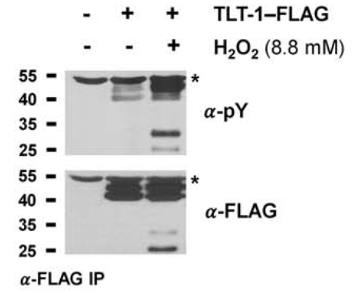 Fig1. TLT-1 tyrosine phosphorylation is inducible by H2O2.
Fig1. TLT-1 tyrosine phosphorylation is inducible by H2O2. -
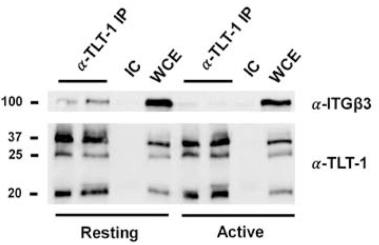 Fig2. TLT-1 and ITGB3 interact in resting platelets.
Fig2. TLT-1 and ITGB3 interact in resting platelets.
Case Study 2: Yoon SH. et al. J Biol Chem. 2012
In this study, we discovered a variant of the TREM family protein, TREM-like transcript-1 (TLT-1), called TLT-1s. This variant is primarily found in macrophages and osteoclast precursor cells. When these cells receive stimulation, the levels of TLT-1s decrease, and it’s typically located in the cytoplasmic membrane. Silencing TLT-1s promotes osteoclast formation and activity, whereas its overexpression has the opposite effect. TLT-1s seems to interact with proteins that modify signaling in cells, like TREM-2, which is vital for osteoclast differentiation. Removing TLT-1s increases calcium activity within cells, as well as certain signaling pathways. This suggests that TLT-1s plays a crucial role in regulating osteoclast activity and cell signaling.-
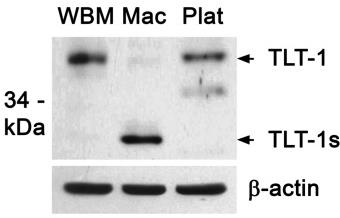 Fig3. Protein levels of TLT-1 and TLT-1s were measured by Western blotting.
Fig3. Protein levels of TLT-1 and TLT-1s were measured by Western blotting. -
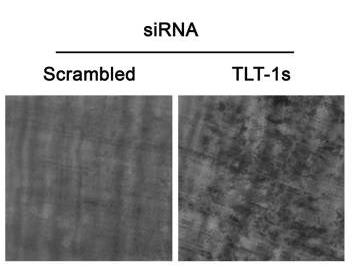 Fig4. Control or TLT-1s-silenced BMMs were plated on dentin slices and cultured in the presence of RANKL.
Fig4. Control or TLT-1s-silenced BMMs were plated on dentin slices and cultured in the presence of RANKL.
Quality Guarantee
High Purity
-
.jpg) Fig1. SDS-PAGE (TREML1-1567H)
Fig1. SDS-PAGE (TREML1-1567H)
-
.jpg) Fig2. SDS-PAGE (TREML1-1682M)
Fig2. SDS-PAGE (TREML1-1682M)
Involved Pathway
TREML1 involved in several pathways and played different roles in them. We selected most pathways TREML1 participated on our site, such as Adaptive Immune System,Immune System,Immunoregulatory interactions between a Lymphoid and a non-Lymphoid cell, which may be useful for your reference. Also, other proteins which involved in the same pathway with TREML1 were listed below. Creative BioMart supplied nearly all the proteins listed, you can search them on our site.
| Pathway Name | Pathway Related Protein |
|---|---|
| Immune System | ERAP2,CLEC2D,TRIM2,FCN2,RNF144B,TREML4,RIPK3,IFIT8,IFITM2,DHX9 |
| Immunoregulatory interactions between a Lymphoid and a non-Lymphoid cell | SIGLEC9,GM11711,PVRL2L,SIGLEC12,CD160,CRTAM,HCST,RAET1E,SIGLEC11,CD300LG |
| Adaptive Immune System | MOV10,FRS2B,NRG3,LILRB5,CD200,CTS7,UBE2L6,TRIM69,KIF2C,MGC174857 |
-
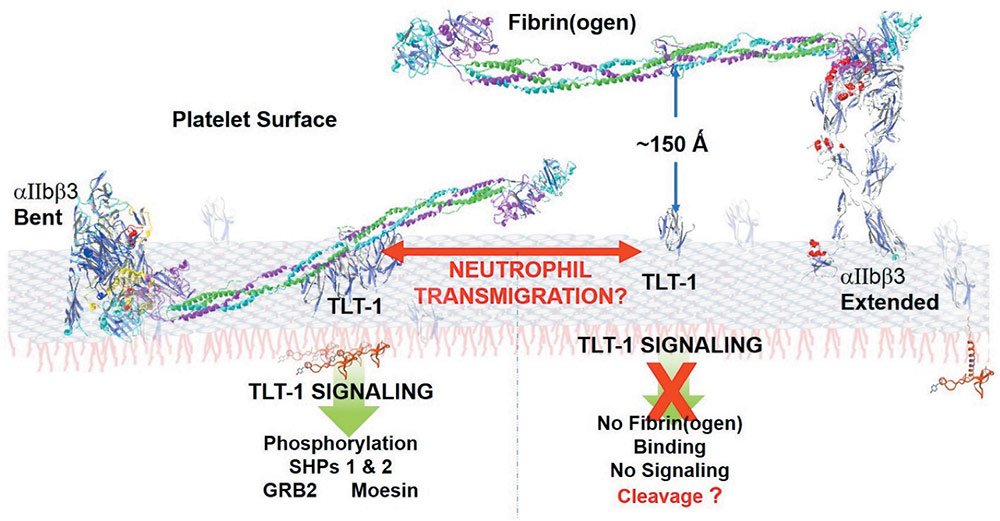 Fig1. Mechanistic Model for TLT-1/Fibrinogen interaction. (Siobhan Branfield, 2021)
Fig1. Mechanistic Model for TLT-1/Fibrinogen interaction. (Siobhan Branfield, 2021) -
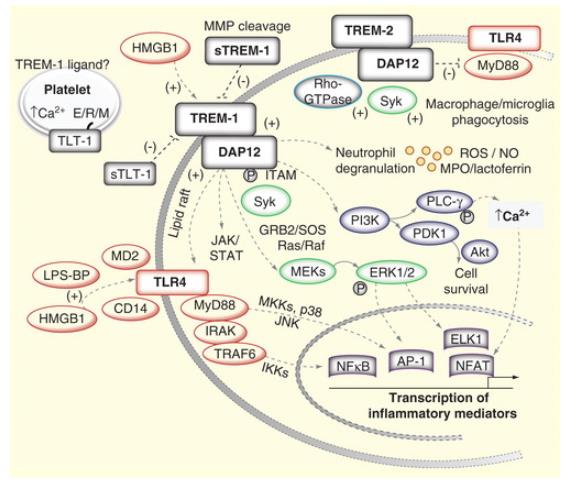 Fig2. Generalized model of TREM and TREM-like transcript receptor actions in monocytes/macrophages and neutrophils. (Christopher J Pelham, 2014)
Fig2. Generalized model of TREM and TREM-like transcript receptor actions in monocytes/macrophages and neutrophils. (Christopher J Pelham, 2014)
Protein Function
TREML1 has several biochemical functions, for example, protein binding. Some of the functions are cooperated with other proteins, some of the functions could acted by TREML1 itself. We selected most functions TREML1 had, and list some proteins which have the same functions with TREML1. You can find most of the proteins on our site.
| Function | Related Protein |
|---|---|
| protein binding | DDX39A,LUC7L,TBRG1,RXRA,CYLD,ARVCF,C4BPB,HACL1,ANAPC4,KIF18A |
Interacting Protein
TREML1 has direct interactions with proteins and molecules. Those interactions were detected by several methods such as yeast two hybrid, co-IP, pull-down and so on. We selected proteins and molecules interacted with TREML1 here. Most of them are supplied by our site. Hope this information will be useful for your research of TREML1.
Resources
Research Area
Related Services
Related Products
References
- Esponda, OL; Hunter, R; et al. Levels of Soluble TREM-Like Transcript 1 in Patients Presenting to the Emergency Department With Chest Pain. CLINICAL AND APPLIED THROMBOSIS-HEMOSTASIS 21:30-34(2015).
- Yoon, SH; Lee, YD; et al. TLT-1s, Alternative Transcripts of Triggering Receptor Expressed on Myeloid Cell-like Transcript-1 (TLT-1), Inhibits the Triggering Receptor Expressed on Myeloid Cell-2 (TREM-2)-mediated Signaling Pathway during Osteoclastogenesis. JOURNAL OF BIOLOGICAL CHEMISTRY 287:29620-29626(2012).




